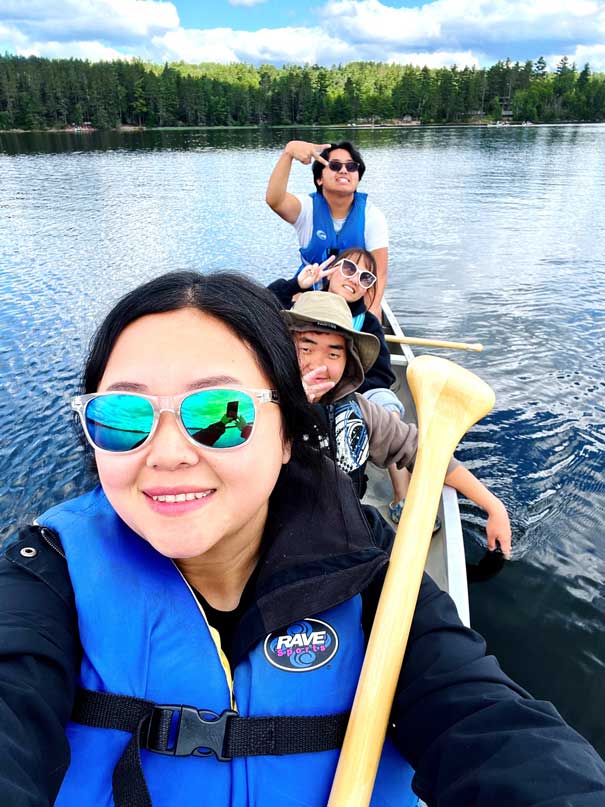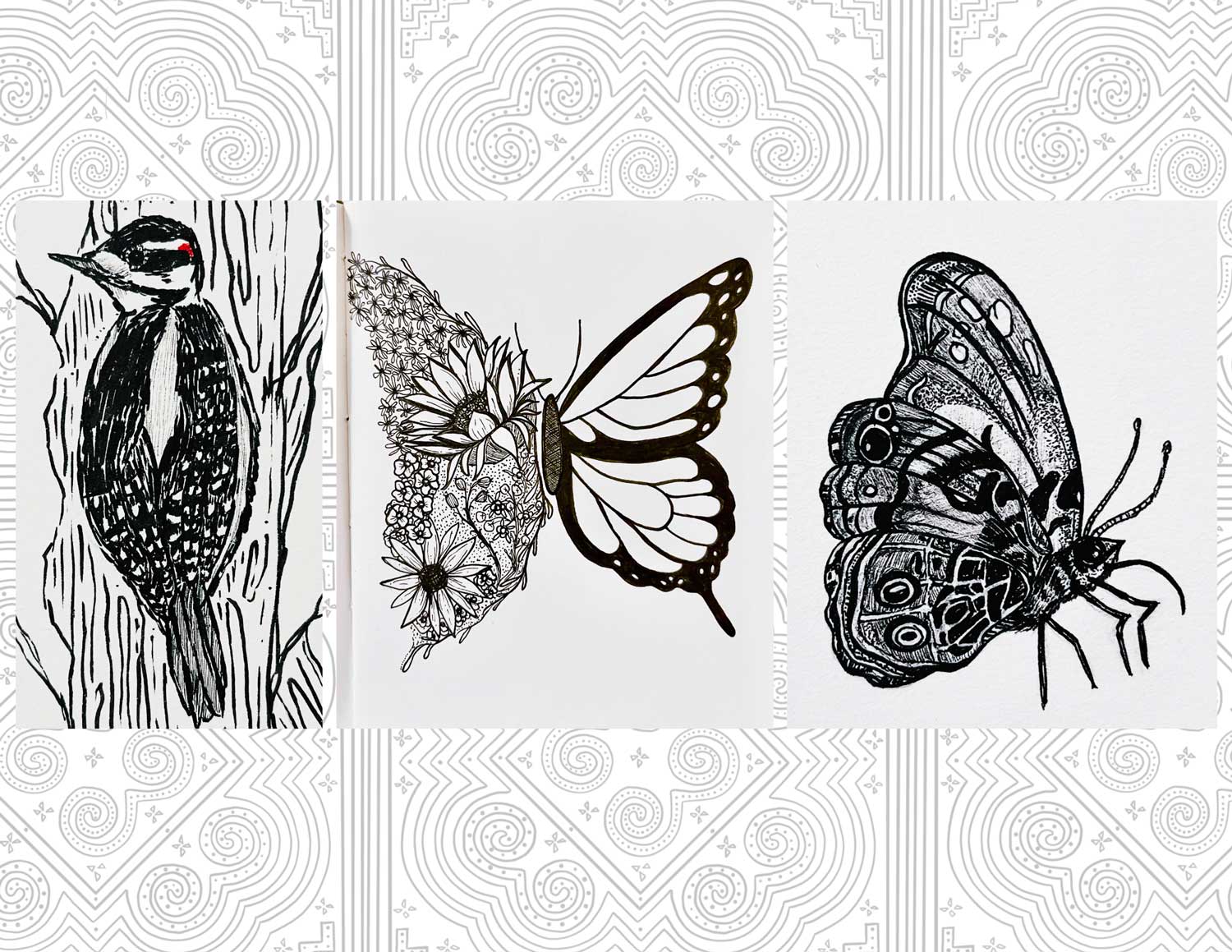Finding Both Thunder And Quiet In Nature – Thia Xiong And Her Favorite Minnesota State Park
By Minnesota DNR Staff
Research for Thia Xiong’s graduate thesis introduced her to Minnesota state parks and recreation areas: their land, history, and culture. In her work today as an outdoors youth leader and an artist, Thia is driven and inspired by those insights, and by what she was taught as a Hmong child. We asked her to answer a few questions about her love for the outdoors and for her art. These are her replies.
Minnesota DNR: What’s your relationship with Minnesota State Parks and Trails and nature in general?
Thia Xiong: My relationship with state parks, trails, and nature in general is being-to-being. This experience may be different for other Hmong folks, but for me, I grew up not understanding “conservation” or “environmental education” as a science or subject separate from my existence.
For a very long time, it didn’t occur to me that this was an education pathway or career field because since I was young, I was taught that the environment was part of my life and cultural practices. At birth, I am released into yaj ceeb, the seen world realm, where all natural beings like rocks, trees, and water, are living spirits. While I am living on this realm, I know that it is kuv txoj hmoov (my mandate of life), and I have responsibilities to care for all that are here who will care for me in return. My time here is limited, and how I lead my life here will carry with me as I leave this realm and return to yeeb ceeb (the unseen world/world of ancestors).
This has deeply influenced how I’ve lived my life with nature as I continue to age and appreciate how I am able to connect with place through these narratives. When I learned about the narratives of Indigenous (Dakota and Anishinaabe) people in Minnesota, I was compelled by how parallel our history, people, and practices are, despite our ancestry being worlds apart. I’ve spent around a decade delving into this and ended up utilizing state parks as a platform.
Cultural stories, land, and relationships deeply influenced my graduate thesis, and I centered on those as I traveled to each park, researching history (from Indigenous voices), talking to park workers, and reflecting on how narratives nurture relationships to land.
DNR: What do you like about creating art inspired by nature?
TX: Most of my art is inspired by nature, whether it be photography, journaling, drawing, clay-making, terrarium building, etc. I dabble in many art forms and mediums. Fall is my favorite season, so I find myself spending more personal and reflective time outside in it, which also inspires creativity. I admire watching as life around me changes and prepares for the next season, reminding me to do the same.
DNR: Do you have a favorite Minnesota state park or trail? If yes, which one and why?
TX: It is truly a hard decision, as each park has its own charms and narratives to share, so I will answer this question as I do with everyone else who has asked me and provide my “favorite” from each direction of the state.
North – Grand Portage State Park. Hiking to Middle Falls when the trails were muddy and full of puddles was incredible. Being in the coniferous forest also brings me so much joy, as do the songs and calls of ravens. Reaching Middle Falls felt empowering – feeling and hearing her thundering message beside me and underneath my feet. Water is life.
East – St. Croix State Park has recently become a favorite. It is one of the few parks with a fire tower which allows a view of the landscape from 100 feet above. I was there this fall, greeted by many crawfish and young spiny softshell turtles. It is the largest state park, so there is a lot to discover and appreciate about this place.
South – Blue Mounds State Park for how close I can be with the rock outcrops. I can see what they see from above or below. If above, I’ll be able to walk among the prairie and if below, the trees and shade. This is also one area in our state where cacti naturally grow, so I’m always excited to see those. There are bison at this park, as well.
West – Glacial Lake State Park is located in the geological area known as Gaaskibag-wajiwan, or rustling leaf mountains, also known as the Leaf Hills Moraines, and they are visually stunning. I enjoyed the quietness of the trails during fall and early spring, when I could be alone with the land, listen, and be embraced by the wind.











